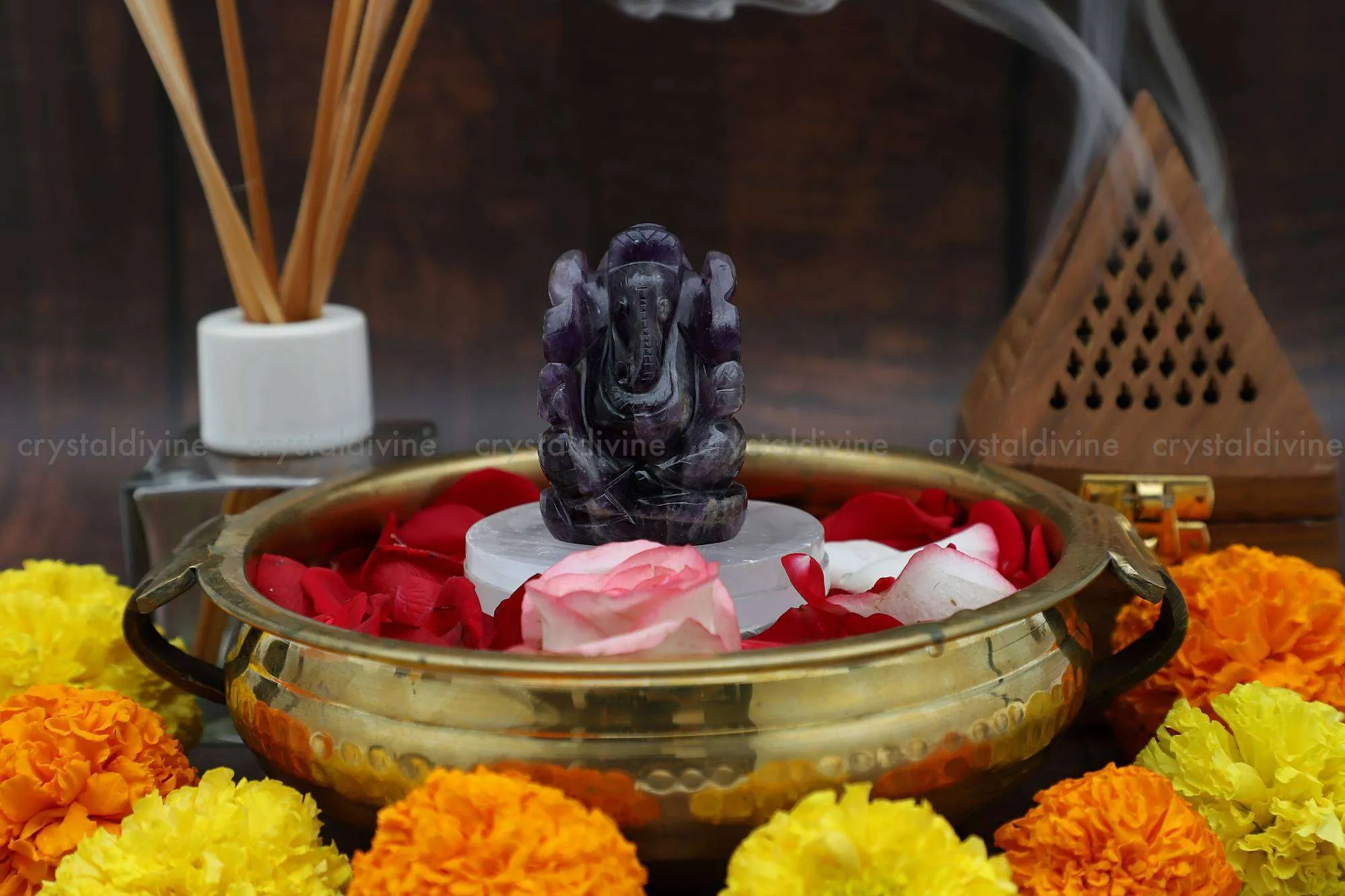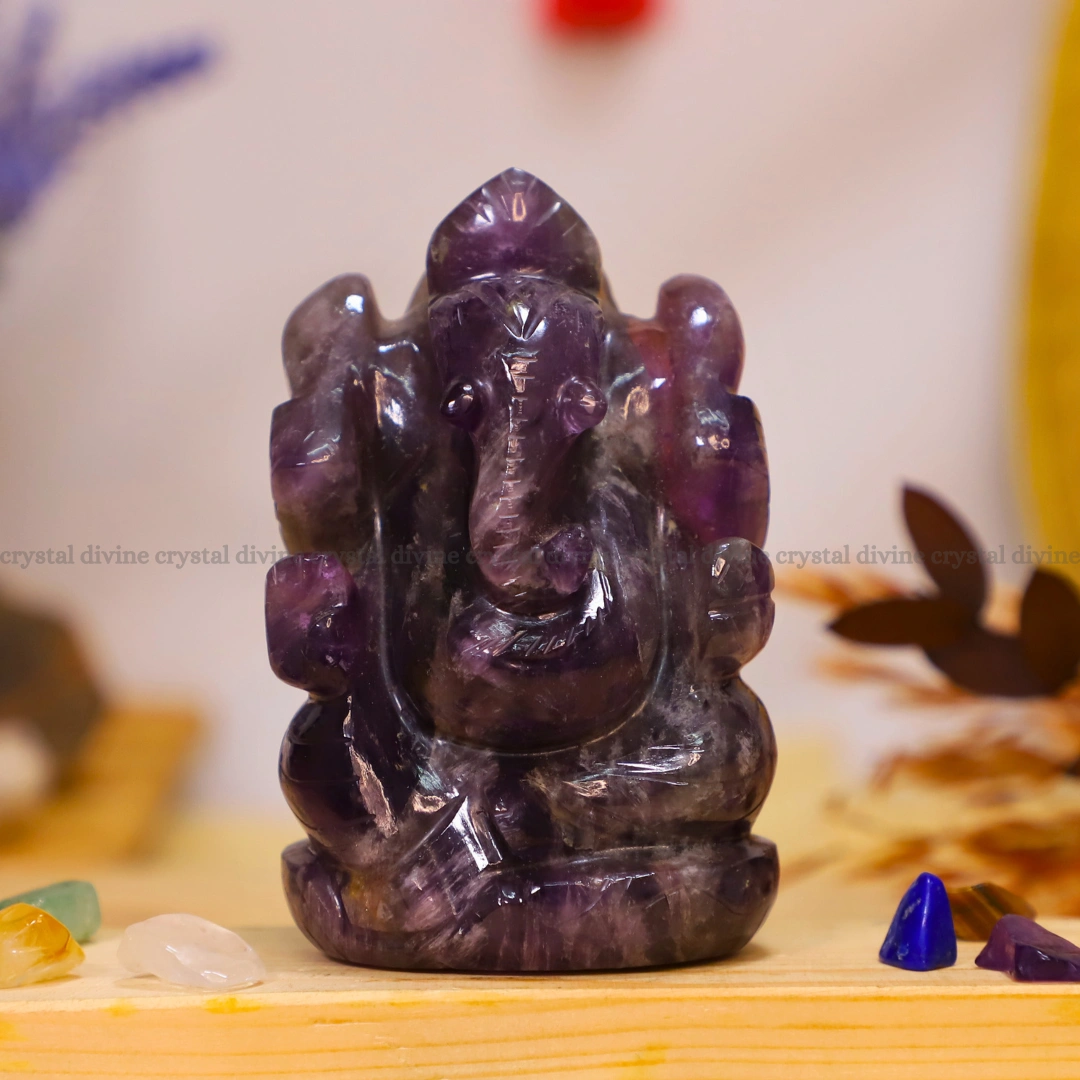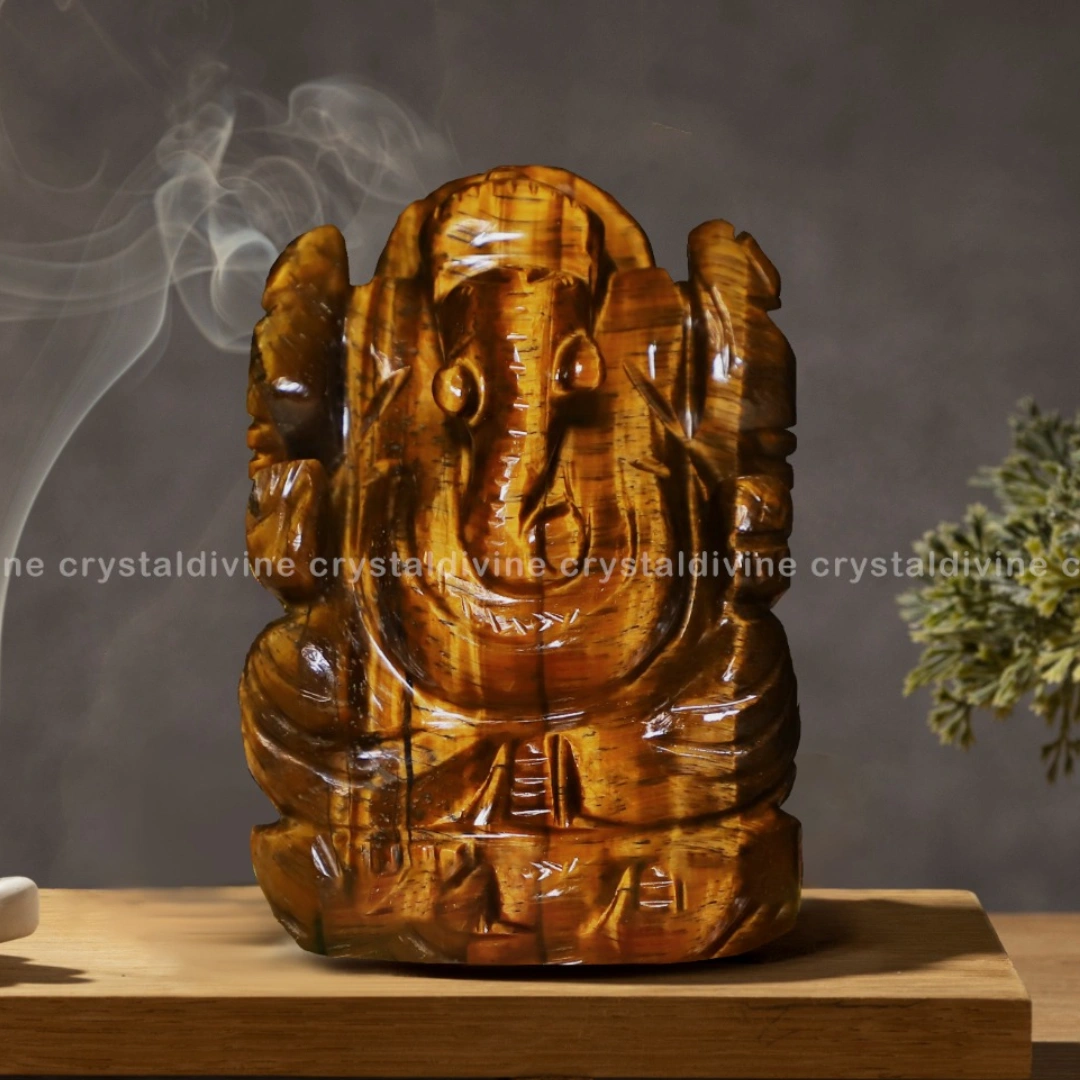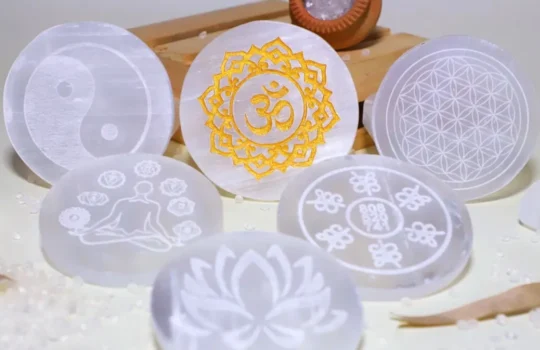Understanding the Significance and Symbolism of the Ganesh Statue

Buy Pure Crystal Ganesh Statue:
In the intricate tapestry of Hindu culture, few symbols resonate as powerfully as the Ganesh statue. An iconic representation of wisdom, prosperity, and remover of obstacles, Lord Ganesha holds a special place in the hearts of millions. Delving into its profound significance and rich symbolism, we embark on a journey to better comprehend the depth and nuances associated with this revered idol. Join us as we unravel the stories, beliefs, and artistic expressions intertwined with the Ganesh statue, shedding light on its monumental influence in spiritual and cultural realms.
Clear Quartz Ganesha statue is often used as part of spiritual practices, & meditation. It can be placed in a room to create a calming and peaceful environment.
Our online shop at Crystal Divine offers a wide variety of natural healing crystals that are authentic, pure and high-quality. We have a vast selection of Ganesh Idols, Crystal Ganesh Statue, Crystal Jaap Mala, Crystal Skin Roller, Crystal Angels, Selenite charging plate, healing crystal bracelets, tumbled stones, crystal wands, crystal clusters, crystal jewelry, and more. We are committed to providing our customers with only the best quality products and excellent customer service
“Ganesha is the harbinger of obstacles, but also the one who removes them. Hence, he is invoked before any auspicious event or new venture.” – Sadhguru
History of Ganesh Statues
The revered Ganesh statue has a deep-rooted history tracing back thousands of years in the Indian subcontinent. Often depicted as a divine deity with an elephant head, the Ganesh idol holds immense significance in Hinduism. These statues have not only been a focal point of worship but also a symbol of luck, prosperity, and the removal of obstacles. Originating in India, the historical evolution of these statues has seen transformations in size, design, and materials, from clay and stone in ancient times to brass, gold, silver, and marble in more contemporary depictions.
The Ganesh murti, often found in a variety of sizes and materials, from intricate gold pieces to detailed stone sculptures, have been a key part of Hindu households and temples. These idols, bearing witness to centuries of faith and adoration, often make their way as gifts during festivals and ceremonies, showcasing their intricate designs and craftsmanship.
Ganesha Festivals and the Role of the Idol:
The deity Lord Ganesha holds an unparalleled significance in the hearts of Hindus, especially evident during the grand festival of Ganesh Chaturthi. This festival not only emphasizes the importance of the idol but is entirely centered around it.
Ganesh Chaturthi is a majestic celebration, especially in India, where it is celebrated with immense devotion and grandeur. The idols for this festival range in size from small, tabletop statues for home worship to massive, parade-worthy effigies. Every Ganesh idol, whether crafted from clay, brass, or marble, embodies the spirit of the deity and becomes a focal point of the celebrations. In many communities, artisans begin the intricate process of creating the clay Ganesh idols months in advance. These clay idols, often painted in gold, silver, or other vibrant colors, are designed for immersion. The immersion signifies the departure of Lord Ganesha back to his heavenly abode after visiting his devotees on earth.
Placement and Vastu:
In the Hindu tradition, every statue, especially a deity as revered as Ganesha, carries with it both religious and vastu significance. Vastu Shastra, an ancient Hindu system of architecture, guides the placement of the Ganesh statue. According to Vastu, placing the Ganesha statue in the northeast corner (or the ‘Ishan corner’) of the house brings positivity and wards off negative energies. For businesses, placing the Ganesh idol, particularly one crafted from brass or gold, near the entrance or in the office reception area is believed to usher in prosperity and eliminate obstacles.
Iconography & Symbolism:
The depiction of Lord Ganesha is rich in symbolism, each element narrating a tale of its own. His elephant head, which makes him easily recognizable, symbolizes wisdom and understanding. The large ears convey the importance of being a patient listener, while the small eyes signify concentration. His trunk’s versatile nature, capable of lifting heavy weights or picking up a needle, showcases adaptability and finesse.
The weapons in Ganesha’s hands, too, hold symbolic meanings. The ‘ankusha’ (a tool for controlling elephants) signifies that one should control their desires, while the ‘pasha’ (noose) suggests that individuals should pull their minds from worldly desires. The sweets he holds symbolize the sweetness of the soul, and his single tusk portrays the importance of retaining good and discarding the bad.
Global Influence and Adaptations:
The veneration of Lord Ganesha isn’t restricted to India. His reverence transcends borders, especially into Southeast Asia. Countries like Indonesia, Cambodia, and Thailand have been deeply influenced by Hinduism, and Ganesha finds a prominent place in their cultural and religious tapestry.
In Indonesia, particularly in Bali, Ganesha idols, or “murtis,” often embellish the entrances of temples and houses. The Balinese version of the Ganesha statue often features intricate local art forms and might be accompanied by figures from local myths. In Thailand, Ganesha, known as Phra Phikanet or Phra Phikanesuan, is revered as the deity of arts and education. Here, he is often depicted riding a mouse, his traditional mount, or sometimes even a lion, showcasing regional adaptations.
Such global influences and adaptations not only highlight the universal appeal of Lord Ganesha but also underscore the flexibility and all-encompassing nature of Hinduism. They showcase how seamlessly the deity and his symbols merge with local beliefs, making Ganesha a truly global deity.
Hinduism
In Hinduism, Lord Ganesha is venerated as the first god to be worshipped during any religious ritual. The significance of Ganesh idols in Hindu rituals cannot be overstated. Often, the idol is placed on the car dashboard, emphasizing its role as a protector during travel. From grand statues in temples to smaller idols in homes, the Ganesha statue remains an omnipresent deity, especially during festivals like Ganesh Chaturthi.
Buddhism
Buddhism, which took root in India and then spread to other parts of Asia, also adopted the veneration of Lord Ganesha. In Buddhist traditions, particularly in the regions of Tibet and Nepal, Ganesha is seen as a deity of wealth and knowledge. The statues in these regions often incorporate unique regional touches, diverging slightly from the traditional Hindu depiction.
Jainism
Jainism, another major religion that originated in India, respects Ganesha as a protector and remover of obstacles. However, his depiction and the frequency of worship might differ from the other two religions. Jain temples occasionally have dedicated sections for Ganesha, and his idols can be found embellished with jewelry and gold.
Key Takeaway: The Ganesh statue, with its rich history, deep symbolism, and universal reverence, stands as a testament to the deity’s enduring significance. Whether you’re looking to purchase a Ganesha statue for your home decor, as a gift, or just out of devotion, knowing its history and symbolism can deepen the connection and appreciation towards the idol. From gold and marble to wood and clay, there’s a Ganesha statue for every devotee and every home, ensuring the deity’s blessings touch every corner of our lives.
Amethyst Ganesha Idol ( Prosperity & Success)
Rose Quartz Ganesha Idol (Promoting Love & Compassion)
Labradorite Ganesha Idol (Focus & Concentration)
Tiger Eyes Ganesha Idol (Confidence & Success)
Clear Quartz Ganesha Idol (Promoting Prosperity & Abundance)
Lapis Lazuli Ganesha Idol (Enhancing Intuition & Spiritual Awareness)
Ganesh Statues in Popular Culture:
Ganesha, with his distinctive elephant head, has permeated mainstream culture, becoming a symbol recognized around the world. His statues can be found in unexpected places, from chic urban apartments in New York to tattoo studios in London.
In the music industry, many album covers showcase Ganesha’s depictions, alluding to themes of overcoming hurdles or seeking divine inspiration. Similarly, in film, especially in Indian cinema, the statue of Ganesha is often shown at the beginning of a venture, symbolizing a positive start.
Moreover, the Ganesha motif is a popular element in fashion. From apparel featuring his serene image to jewelry like necklaces and earrings, Ganesha has truly become a global icon.
Ganesh Statues in Art:
Art, as a reflection of society, has always found inspiration in the divine. The image of Ganesha, rich in symbolism and meaning, has fascinated artists for centuries. Traditional Indian art showcases Ganesha in various postures – dancing, playing musical instruments, or seated in majesty. These can be found on temple walls, ancient manuscripts, and even royal palaces.
With the advent of modern art, Ganesha’s representation evolved. Contemporary artists, while retaining his iconic image, infuse it with modern themes, making statements about the changing world. From abstract depictions using vibrant colors to fusion art where Ganesha graces urban landscapes, the artistic interpretations of this deity are as vast and diverse as his devotees.
Ganesh Statues in Literature:
Literature, with its power to shape thoughts, has often drawn from the rich tapestry of mythological tales associated with Ganesha. In ancient Indian scriptures, stories about Ganesha’s wit, intelligence, and his undying love for sweets come alive. These tales, passed down generations, form an essential part of the Indian storytelling tradition.
In modern literature, especially in poems and short stories, Ganesha often emerges as a symbol of wisdom, a beacon of hope, or a figure of nostalgia. Writers, both Indian and from around the world, weave tales where the Ganesha statue becomes a protagonist, a silent observer, or a catalyst triggering a sequence of events.
From his origins in ancient myths to his evolution into a global cultural icon, the journey of Ganesha and his statues is nothing short of remarkable. Through various forms of art, religion, and popular culture, he continues to touch lives, underlining his universal appeal and timeless relevance.
Symbolism of Ganesh Statues
Lord Ganesha, the elephant-headed god, is known as the remover of obstacles. Each element of the Ganesh statue symbolizes a profound meaning:
- Elephant Head: Represents wisdom and knowledge.
- Large Ears: Symbolizing attentive listening.
- Trunk: Demonstrates adaptability and versatility.
- Single Tusk: Showcases the importance of retaining the good and discarding the bad.
- Position: Often seen sitting on a throne or dancing, each posture symbolizes a different aspect of the deity’s grace.
Ganesh Statues in Other Religions:
Lord Ganesha is not just confined to Hinduism. His presence is palpable in other religions too, an embodiment of his universal appeal.
Buddhism: In Buddhism, particularly in the Tantric traditions of Tibet and Japan, Ganesha is revered. He is sometimes represented as Vinayaka and is considered an obstacle-remover. In the land of the rising sun, Japan, he’s known as Kangiten, the god of bliss. Twin Ganesh statues depicting male and female forms in embrace can be found in Japanese Buddhist temples, symbolizing conjugal harmony.
Jainism: The Jains, who share many common symbols and deities with Hindus, also venerate Ganesha. In Jain depictions, Ganesha usually sits with a bowl of sweets, symbolizing the sweet nature of dharma or righteous living.
FAQs for Ganesha Idols at Crystal Divine
- What materials are used to make the Ganesha idols on Crystal Divine?
- Our Ganesha idols are crafted from a variety of high-quality materials, including citrine, rose quartz, brass, marble, and others. Each material is chosen for its unique aesthetic and metaphysical properties.
- Can I find a Ganesha idol suitable for my office or home decor?
- Absolutely! We offer a wide range of Ganesha idols in various sizes, designs, and materials that are perfect for both office and home environments.
- Are there specific benefits associated with different types of Ganesha idols?
- Yes, depending on the material used, each Ganesha idol can offer different spiritual and energy-related benefits. For instance, citrine is associated with abundance, while rose quartz is linked with love and compassion.
- How are the Ganesha idols packaged for delivery?
- We prioritize the safety of our products. Each Ganesha idol is securely packaged to ensure it reaches you in pristine condition.
- How often is the Ganesha idols collection updated on Crystal Divine?
- We frequently update our collection to provide our customers with a variety of choices. Be sure to check back often or subscribe to our newsletter for updates!
- Are there any care instructions for the Ganesha idols?
- Care instructions can vary based on the material of the idol. However, for most idols, a gentle wipe with a soft cloth is sufficient. Avoid using harsh chemicals or placing them in direct sunlight for extended periods.
- Can I get a custom-made Ganesha idol?
- [Based on your business model, answer accordingly, e.g., “Currently, we offer a diverse range of pre-made Ganesha idols. We are exploring options for custom designs and will keep our customers updated.”]
- Do you offer international shipping for the Ganesha idols category?
- Yes, we provide international shipping for our customers. Kindly check our shipping and delivery page for more details on charges and delivery times.
- How can I read reviews about a specific Ganesha idol I’m interested in?
- On each product page, you’ll find reviews from our customers. These reviews can provide insights into the quality and satisfaction of our Ganesha idols.
- What if the Ganesha idol I receive is different from the image on the website?
- We strive for accuracy in representing our products. However, slight variations may occur due to lighting or natural differences in the materials used. If you’re unsatisfied with your purchase, please refer to our return and refund policy.















